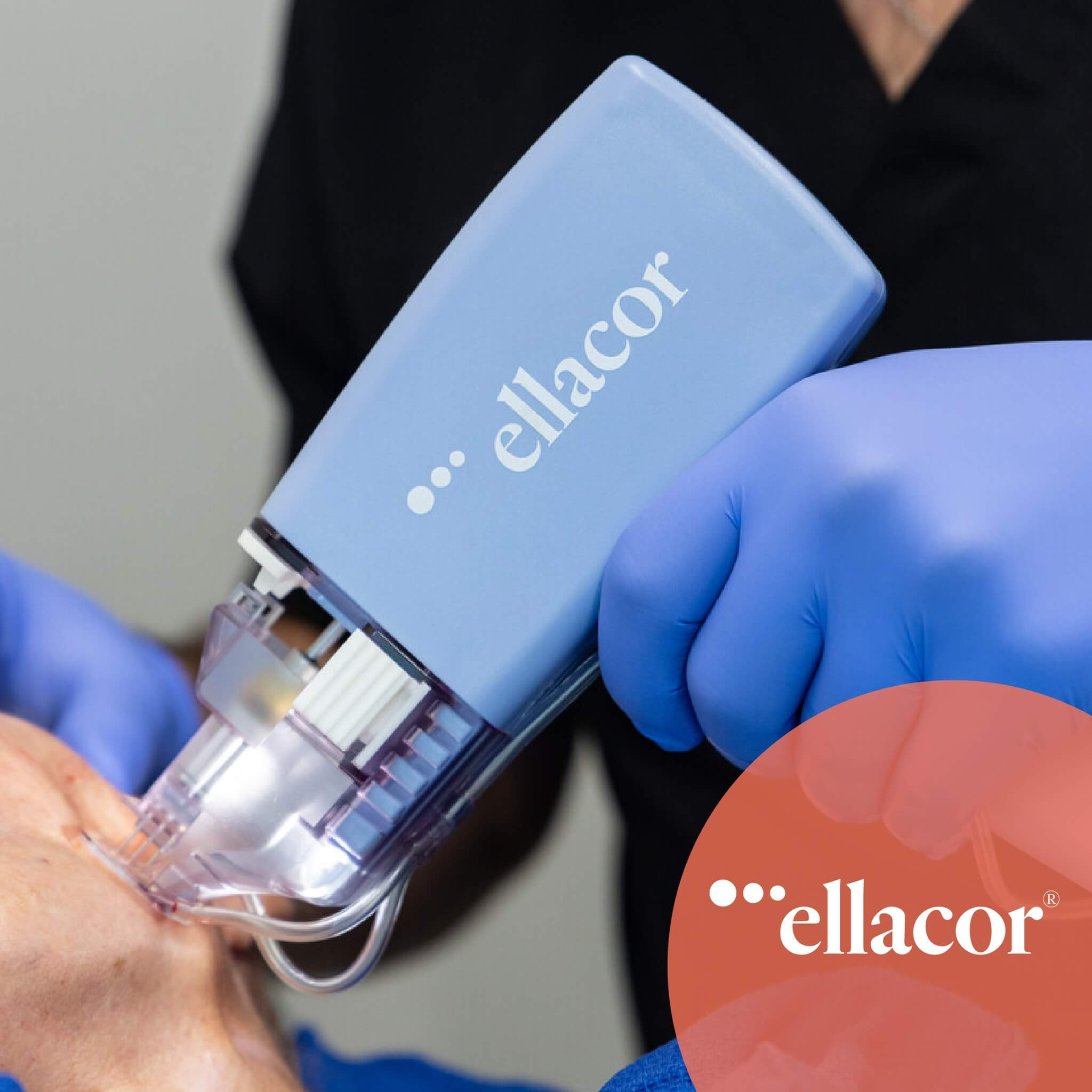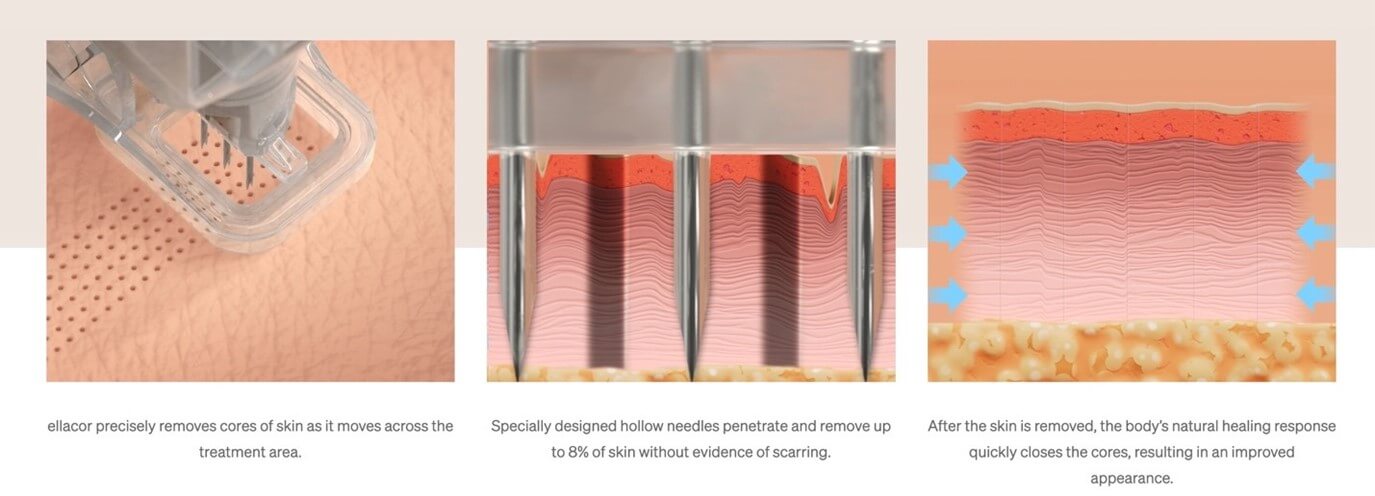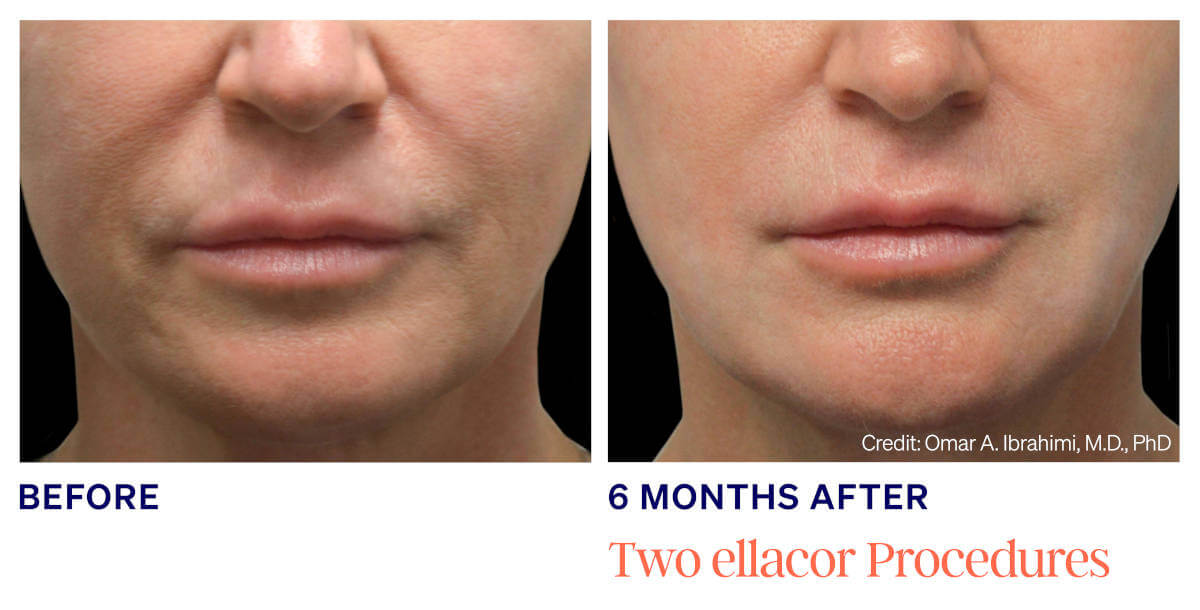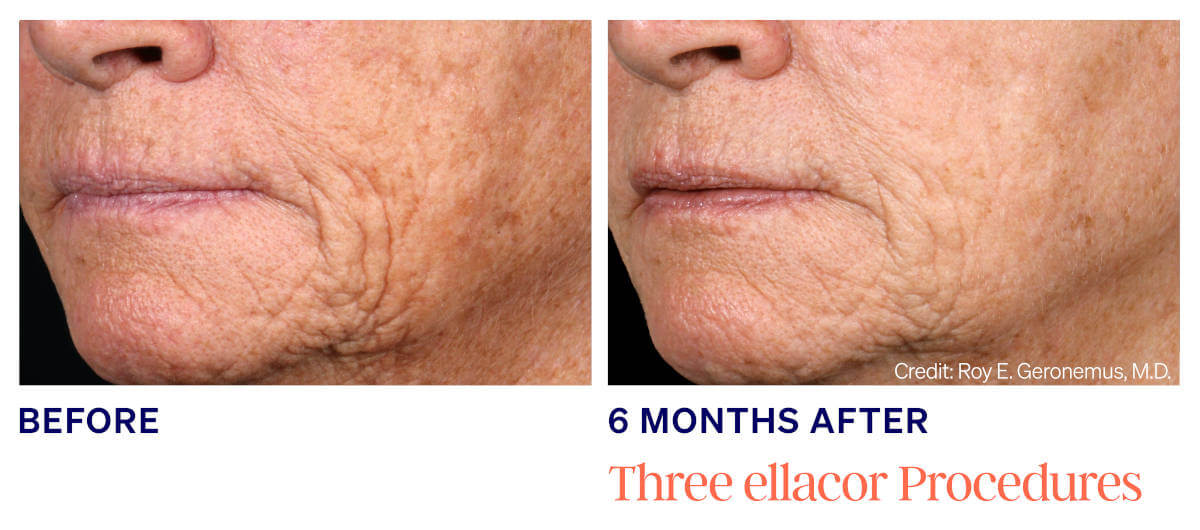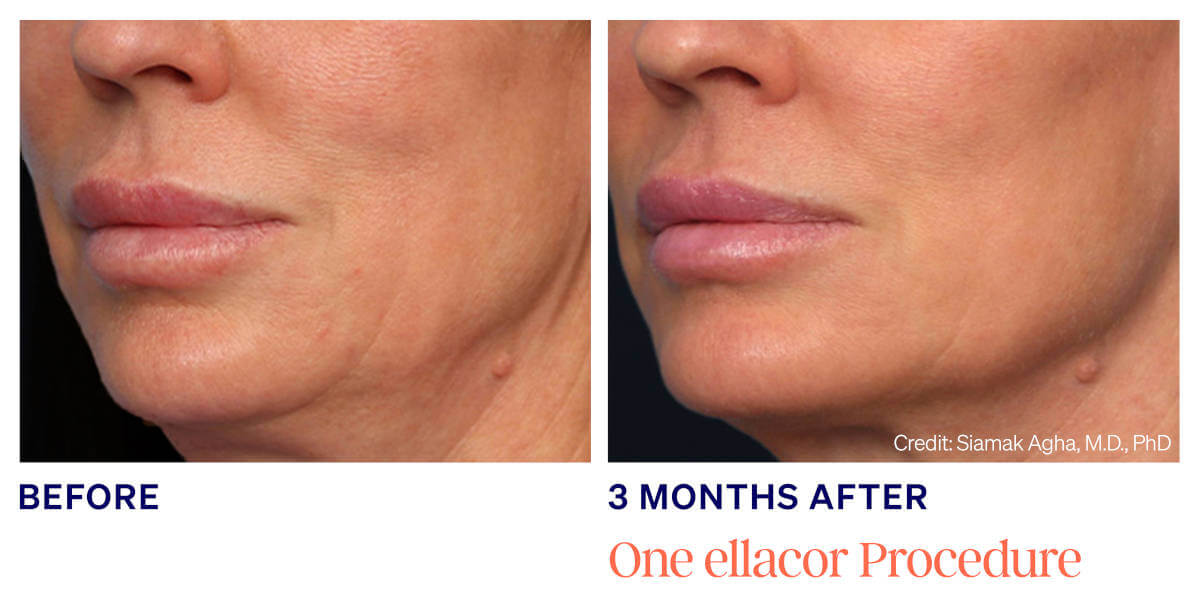Ellacor Treatment at U.S. Dermatology Partners
Ellacor is an innovative, first of its kind treatment that utilizes newly developed micro-coring technology to improve the appearance of moderate to severe wrinkles and excess skin. Delivering natural-looking, long-lasting results, Ellacor is quickly becoming a go-to treatment option for many people who want to age gracefully without the downtime and discomfort associated with more invasive surgical options. You can learn more on this page or by contacting Center for Aesthetic and Laser Medicine Scottsdale a division of U.S. Dermatology Partners to schedule a consultation with one of our trusted dermatologists.
Ellacor is the first and only micro-coring device that removes excess skin on the microscale, delivering improvement in the appearance of moderate to severe wrinkles in the mid to lower face for 90% of patients, according to Cytrellis, the manufacturers of Ellacor. This in-office procedure is performed under local anesthesia and delivers anti-aging results with significantly less discomfort compared to surgical treatment options. The overall idea is simple, a hollow needle is used to remove excess, sagging and aging skin. The microscopic precision ensures minimal damage to healthy skin cells. The microcores removed are less than half a millimeter in diameter, but they extend through the full thickness of skin layers. Ellacor offers a bridge between what’s possible with traditional minimally invasive anti-aging procedures and the more dramatic results possible with cosmetic surgery.
Find This Service Near You
Who Is a Good Candidate for Ellacor?
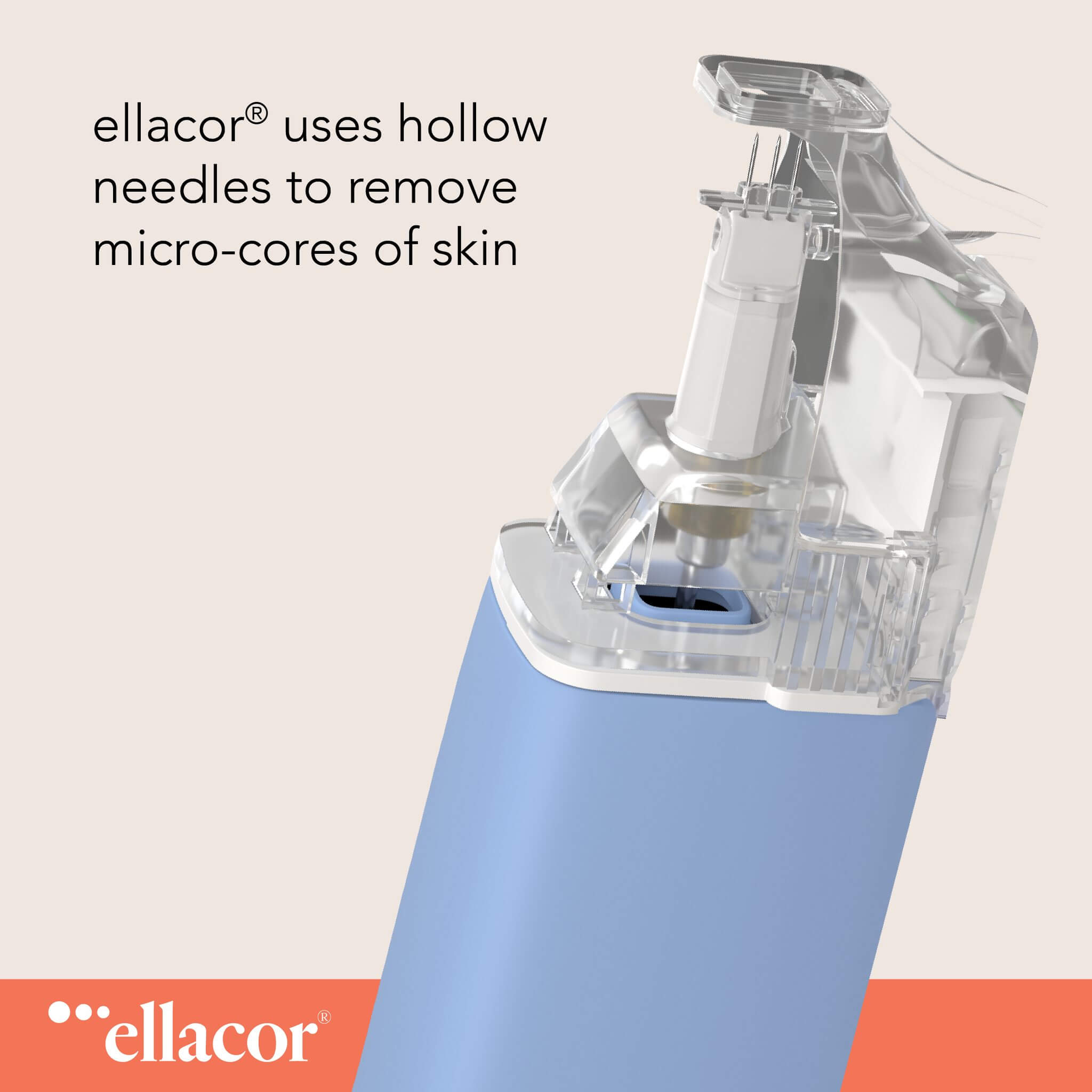
The specific treatment areas for Ellacor include:
- Jawline – addresses loose, saggy skin beneath the jaw sometimes referred to as jowling.
- Nasolabial folds – improves the appearance of indentations running from the side of the nose to the corners of the moth. These may also be called laugh lines or smile lines.
- Marionette lines – diminishes the appearance of deep hollows on the sides of the mouth that are said to resemble a marionette puppet’s facial structure.
Some factors your dermatologist may consider before recommending Ellacor include:
- Skin tone – Ellacor has only been approved for Fitzpatrick skin types I-IV, so those with very dark skin tones may not be able to achieve their desired results with this treatment.
- Certain medical conditions – if you have an immunosuppressing condition or a medical diagnosis that may slow wound healing like diabetes, Ellacor may not be a good option.
- Expectant or nursing mothers – while Ellacor is generally considered a safe, elective procedures during pregnancy and while nursing are not typically recommended due to potential risks for the baby and mother.
- Previous dermatologic procedures – those who have received fillers in the treatment area within the last six months should not receive Ellacor treatment.
- Prescribed certain medications – taking blood thinners and anti-inflammatory medications, especially in high doses within the last two weeks, increases bleeding and other risks associated with the procedure.
- Skin conditions – those who have wounds, sores, and infections on the skin in the treatment area should wait until they are fully healed to receive treatment. Skin cancer and birthmarks in the treatment are also factors that may mean Ellacor isn’t the right option.
- History of irregular wound healing – if you’ve developed keloid scars, noticed hyperpigmentation, or experienced other cosmetic or skin health issues during wound healing, your dermatologist may not recommend Ellacor treatment.
Does Ellacor Help with Jowling?
Ellacor is U.S. Food and Drug Administration (FDA) approved to address moderate to deep wrinkles and skin laxity on the lower face. It can slightly improve the appearance of jowling, which is the loose, sagging appearance of skin below the jawline. For mild skin laxity beneath the jaw, Ellacor may be a good option. For moderate to severe jowling, a more advanced cosmetic dermatology or surgical intervention may be recommended.
How Is Ellacor Different from RF Microneedling?
Radio frequent (RF) microneedling and similar skin tightening dermatologic treatments are not designed to remove skin. Instead, they trigger skin healing, which can lead to smoother, tighter skin. Specifically, RF microneedling devices use needles to create very small (micro) wounds. This starts the healing process, which encourages skin cell turnover and accelerated collagen and elastin production. Ellacor removes cores of skin. Over the course of treatment, a significant amount of damaged and irregular skin cells are removed, leaving healthier, more youthful-looking skin behind.
How Does Ellacor Work?
The Ellacor treatment procedure uses hollow needles, like the ones utilized to draw blood, to remove micro-cores of skin on the mid to lower part of the face. The comfortable, in-office procedure is completed in about 30 minutes on average.
During a consultation visit, your dermatologist will walk through exactly what to expect on the day of your Ellacor treatment session, but the general process includes:
- Numbing – your dermatologist will administer a local anesthetic to ensure comfort throughout the procedure.
- Micro-coring – once skin is numb, the dermatologist places the Ellacor device in a pre-determined grid pattern across the treatment area to remove excess skin microcores through suction.
- Post-procedure – the microcores begin to heal immediately and patients should expect 3-7 days of relative downtime. Downtime will depend on the settings use. The dermatologist provides detailed instructions for healing and follow up. For the first few days, you’ll need to avoid using harsh skincare products or cosmetics. You’ll likely need to apply an occlusive ointment, like petroleum jelly, to protect and hydrate the treated are as it heals for the first few days. You’ll also need to avoid sun exposure for at least a week following treatment.
- Treatment series – the Ellacor treatment process is repeated two to three times to achieve optimal results.
- Results – you should begin to notice improved appearance within a few weeks of your first treatment with final results achieved up to six months from the last Ellacor session.
Are There Any Side Effects?
Any dermatologic procedure will have side effects. However, as a minimally invasive treatment, Ellacor has relatively few side effects when performed by a professional.
Potential side effects reported by Cytrellis usually resolve within hours or a few days of treatment, and they include:
- Pain or discomfort
- Bruising
- Numbness
- Tightness
- Swelling
- Change in skin texture (dryness or roughness)
- Skin peeling
- Circular injection marks
- Changes in pigmentation (may take longer to resolve or need treatment to resolve)
In addition to these common side effects that usually resolve on their own, there are some less common side effects that may occur and require intervention as soon as you notice them, including:
- Scarring, including irregular scar tissue formation such as keloid scarring
- Infection (mitigated by proper care during healing)
- Persistent itching
- Irregularities in skin texture or tone
- Death of healthy skin tissue
How Long Will Ellacor Results Last?
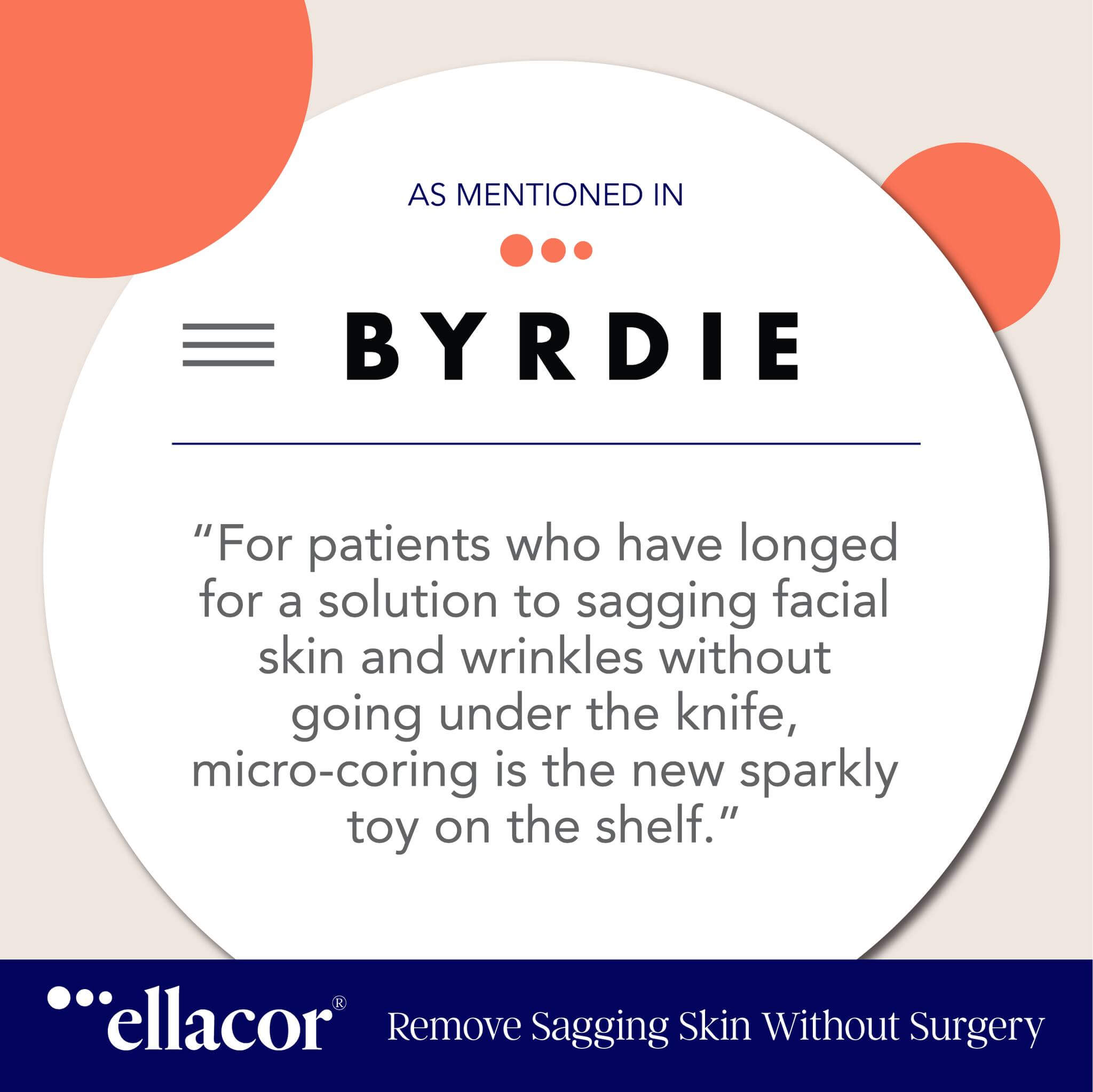
When noticeable signs of skin aging begin to return in the treated area, they will recommend retreatment. Some factors that impact the frequency of retreatment include:
- Age – older adults may require more frequent maintenance sessions.
- Skin quality – those who have very thin skin, chronic skin conditions, and other concerns that impact the health of their skin may need more frequent retreatment.
- Skincare – those who maintain a good anti-aging skincare routine, limit sun exposure, and apply sunscreen with an SPF of 30+ will need less frequent maintenance sessions.
- Lifestyle – smoking, excessive alcohol consumption, poor diet, chronic dehydration, and other lifestyle factors will also contribute to Ellacore retreatment frequency.
Ellacor Before & After Results
*Results may vary by individual

